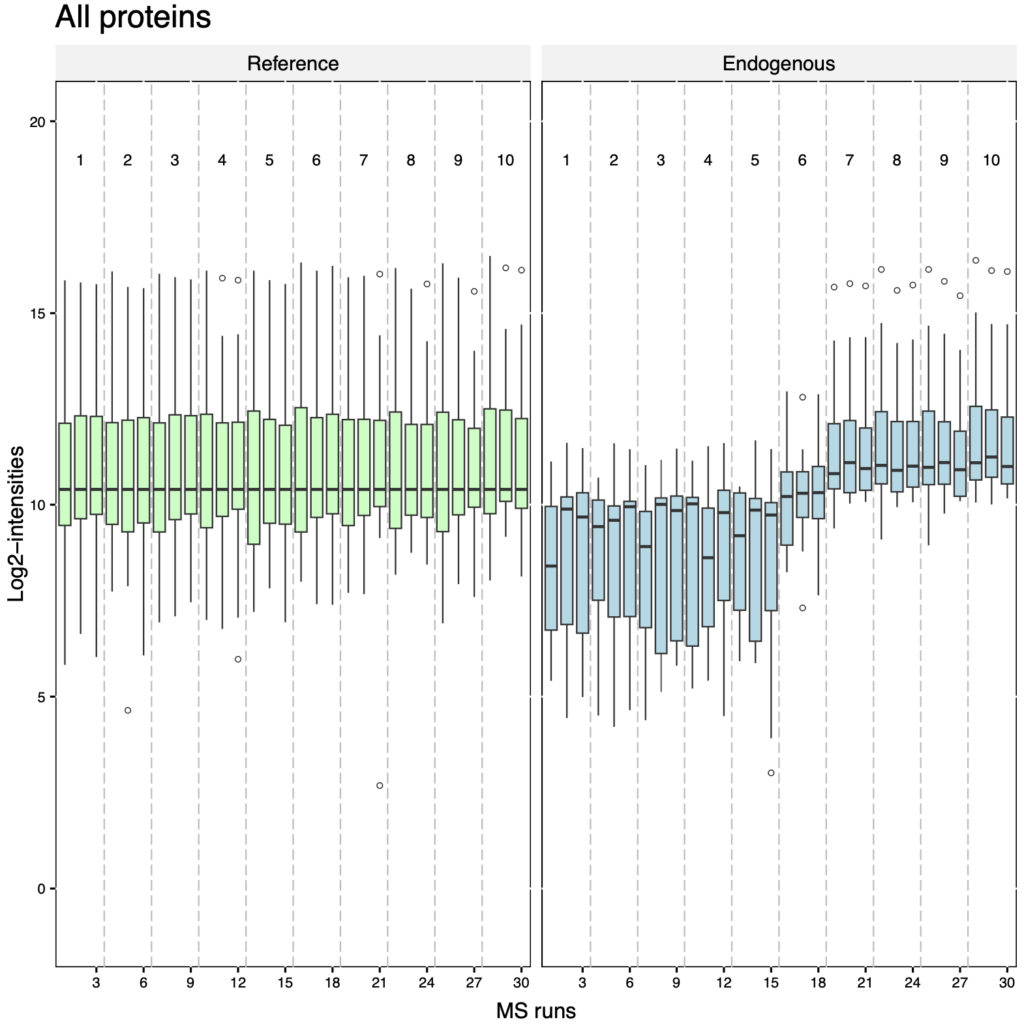Getting Started with MSstats
Below users can find a series of vignettes, tutorials, and relevant publications to help get started with MSstats.
Introduction
MSstats is an open-source R package for statistical relative quantification of proteins and peptides in mass-spectrometry-based proteomics. MSstats supports label-free and label-based experimental workflows and data-dependent, targeted and data-independent spectral acquisition. It operates by taking in spectral peaks that have been identified and quantified, and then generates either a list of peptides or proteins with varying levels of abundance or concise summaries detailing the relative abundance of peptides or proteins. The underlying mechanism of MSstats is based on a versatile set of linear mixed models.
Introductory Vignettes



We encourage new users to check out recordings from our May Institute course on YouTube. Topics covered range from an R crash course for beginners to more advanced statistical modeling for mass spectrometry data.
Publications
- T. Huang et al. “Statistical detection of differentially abundant proteins in experiments with repeated measures designs and isobaric labeling”. Journal of Proteome Research, 22:2641, 2023. [LINK]
- D. Kohler et al. “MSstats version 4.0: statistical analyses of quantitative mass spectrometry-based proteomic experiments with chromatography-based quantification at scale”. Journal of Proteome Research, 22:1466, 2023. [LINK]
- L. Malinovska et al. “Proteome-wide structural changes measured with limited proteolysis-mass spectrometry: an advanced protocol for high-throughput applications”, Nature Protocols, 18:659, 2023. [LINK]
- D. Kohler et al. “MSstatsShiny: a GUI for versatile, scalable, and reproducible statistical analyses of quantitative proteomic experiments”, Journal of Proteome Research, 22:551, 2023. [LINK]
- D. Kohler et al. “MSstatsPTM: Statistical relative quantification of posttranslational modifications in bottom-up mass spectrometry-based proteomics”, Molecular & Cellular Proteomics, 22:100477, 2022. [LINK]
- M. Choi et al. “MassIVE.quant: a community resource of quantitative mass spectrometry–based proteomics datasets”, Nature Methods, 17:981, 2020. [LINK]
- T. Huang et al. “MSstatsTMT: Statistical detection of differentially abundant proteins in experiments with isobaric labeling and multiple mixtures”, Molecular & Cellular Proteomics, mcp.RA120.002105, 2020. [LINK]
- T.-H. Tsai et al. “Selection of features with consistent profiles improves relative protein quantification in mass spectrometry experiments”. Molecular & Cellular Proteomics, mcp.RA119.001792, 2020. [LINK]
- E. Dogu et al. “MSstatsQC 2.0: R/Bioconductor package for statistical quality control of mass spectrometry-based proteomic experiments”. Journal of Proteome Research, 18:678, 2019. [LINK]
- C. Galitzine et al. “Nonlinear regression improves accuracy of characterization of multiplexed mass spectrometric assays”, Molecular & Cellular Proteomics, RA117.000322, 2018. [LINK]
- T.-H. Tsai et al. “Statistical characterization of therapeutic protein modifications”. Scientific Reports, 7, 7896, 2017. [LINK]
- A. L. Oberg, O. Vitek. “Statistical design of quantitative mass spectrometry-based proteomic experiments”. Journal of Proteome Research, 8:2144, 2009 [LINK].
More datasets including data, R script and output are available in MSstats material github.
